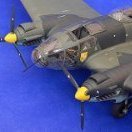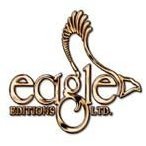Search the Community
Showing results for tags '1/24 scale'.
-
Hi fellow modellers Due to lack of time and space for next LSP-modelling project I was looking for some alternative project just to not get out of practise. I stumbled over a figure from Chronos Miniatures named „Master of Swords“ that surprisingly offered two heads. I chose to go with the Twi‘lek style head. After some research I decided to take a challenge with painting tattoos. Although far from LSP-modelling I hope you like the result. Thanks for watching Cheers Nils
-
Hi All - thought I’d resurrect these two from my BOD (Box Of Doom) I don’t have a Shelf. A quick - where I am - These two where separate presents on my 50th - a couple of years ago now They laid around in my stash for quite some time. Then chatting with my Sister one day we where reminiscing of when these where a brand new item on the shelves in the 70’s. I had been plaguing my Dad for months about it. So came around Christmas and there under the tree was a huge box. Baring in mind that we didn’t have lots of spare cash in them days and it wasn't a cheep kit! This was a massive thing for my parents to do for me. The other thing I remember about it was that because of the size and complexity of it - I was only 7 - my dad roped my big Sis into helping me. So we spent weeks both having fun putting it together and it still lives in my parents house to this day! The box shot Anyway enough of that. The upshot being I have these two kits so lets get um going - this is some two years ago. Did the usual tinternet searches found some amazing builds that gave me some pointers/insperation and started. But have to say not many seem to get made! The first task - ohhh and boy is it a task - fill the bullet hole sized rivet detail and the wired texture there is all over the main Fus, Wings etc. I’m sure it was there but don’t remember it being there on from my boyhood experience. Then didn’t pay much attention those days. Sure I was like everyone else it was buy, stick, paint, stickers and hang it on the ceiling by tea time. The first one (RAF) tried to use the car filler paint - it was ok just the paint spray and time! The other (US) one took a different approach with using some waterd down milliput. A bit like making a slip from clay, painted that over with a big old brush. This method worked a lot better and quicker for me. This is an horrible task - trust me - So do a bit then do something else then a bit more. still loads of sink makes and bits to fill - but it is an old mould So in-between the constant rubbing back. I started the look at the next big thing, the air intakes. These are very prominent on the harrier and hard to miss. This is where the moulds are really showing their age as the detail on the intake doors is very soft now. I was always going to attempt to do something here - kind of a make or break on them both - so out with pencils tape and measure implements started the slice and dice. Firstly there is know way I was going to make this 100% accurate. Way beyond my skills. I was more after an improvement and more representative of the real thing. With a tape template draw in and marked the doors then chop out. Hindsight and all that and a recommendation. Just cut the whole back off. Then the doors rather than hollowing them out like I did. Just cut them - lot faster, lot easier to cut, could actually hinge if you wanted too and easier to do the final repair as this will all have to be blended into the fuselage. Chopped and blending in the splines and walls. This has a more curved shape in the real thing just working and improving what is in the kit Doors cut out and slight curve apply to the front edge Little brass tool made for the little nicks on each door All the doors in - I bagged these all up when I finally ran out of steam 2 years ago so hopefully there is still a full set for each Then Gun pods - Started with a purchase from a few years ago at Telford - now to cut some lengths of Brass tubes Once again this is more of a detail enhancement of the kit parts than a 100% accurate. Cut and opened up the pod ready to drill out and apply the gun cover. Then the ejection chute was opened up and reshaped. all looks a bit to square on the kit piece. there is some kind of slightly covered hole on the side which isn’t depicted so that got cut out and filled. Next there are some backward facing vents on the bottom. I made a template for these and formed some thin aluminium foil over it to make them. couple of holes and panels added and that was that. My tester done The gun cone needs to be blended in as there is no seam line as the kit depicts. Just needed to rinse and repeat three more times A spray of aluminium paint from a rattle can to show any defects that need correcting - more sanding! Final line up So this is as far as I got before I lost the will to sand anymore so hopefully my next update will be some new stuff! Any help or pointer welcome. Especially on the US one as my knowledge is very sketch for them. till next time. Happy modelling and stay safe!!! Taff
-
Happy to announce a set of 1/24 scale bombs, US 500 lb general purpose AN-M64, has been added to the catalog. The models are scaled from US Army Air Corps drawing 82-0-74 dated August, 1942. The models are suitable for F6F Hellcat, P-51 Mustang, P-47 Thunderbolt, etc.
- 2 replies
-
- model monkey
- p-47
-
(and 6 more)
Tagged with:
-
Afternoon folks Here's Airfix's classic Harrier GR3 from the venerable 1/24th scale kit, warts and all. Built as it comes, but with some home-made additions to the cockpit and seat. The kit decals and Xtracolour paints were used throughout. For its age, it's a really nice kit. The cockpit is very basic and the landing gear and bays are lacking in details, but with some good old-fashioned scratch-building you can make a decent representation of the Harrier. Happy modelling! Tom
-
Just added the finishing touches to Airfix's 1/24th Hawker Typhoon MkIb this week: a project I've had on the bench for the last 6 months or so. Admittedly I've picked it up and put it down as and when I've felt like it, but regardless this kit is most definitely a long-term investment in regard to time and effort. I found it an absolute joy to build and thoroughly enjoyed every minute. Fit was exceptional but you must follow the instructions to the letter, especially where the engine and its piping is concerned, as tolerances are very tight. The only after-market was a set of Eduard seat belts - everything else was OOB. PIC 9 by Thomas Probert, on Flickr PIC 8 by Thomas Probert, on Flickr PIC 7 by Thomas Probert, on Flickr PIC 6 by Thomas Probert, on Flickr PIC 5 by Thomas Probert, on Flickr PIC 4 by Thomas Probert, on Flickr PIC 3 by Thomas Probert, on Flickr PIC 2 by Thomas Probert, on Flickr PIC 1 by Thomas Probert, on Flickr PIC 10 by Thomas Probert, on Flickr I opted for the post-war scheme so other than some tonal variation to the paint, I kept the weathering restrained. Paints were Xtracolour enamels with Humbrol flat as a top coat. Decals were from the kit and were excellent, bedding down well over the recessed/raised details without any problems. All in all, a fantastic kit - roll on the big Hellcat! Best regards, Tom
- 15 replies
-
- airfix
- 1/24 scale
-
(and 1 more)
Tagged with:
-
Here is my newly built Hawker Typhoon, in 1/24 scale from Airfix. This is a magnificent kit to build. It's a little challenging, but that's what it should be, and also very big. . I built it with an Eduard etch details for the cockpit, and also substituted Eduard steel seat belts for the kit parts. One other addition I now wish I'd made was metal undercarriage legs, as the kit pieces are a little wobbly. Clamping the doors to the legs for a firm attachment as the glue sets is a help, and it now appears to be quite steady. There are about 500 parts in this kit, and they assemble into a pretty impressive kit. But to further enhance the kit, I made both the pilot's door and top canopy hinges so they can open and close as I wish. I also made the lower cowlings fit to the model, which the instructions tell you can't be done if you want a fully detailed engine. Well detailed cockpits and engines are, for me, important parts of any large scale build. Alas, there is no way the top engine cowl will fit, so I'll have to get the duster out more often. There is a detailed build in the Works in Progress forum, so it is not my intention to reproduce much from that here. You can find it in this link: http://forum.largescaleplanes.com/index.php?showtopic=67834 Instead, I would like to provide a little history of this plane, the tactics used and it's pilot. But first, a few more pictures of the plane. I have chosen to build a fighter bomber version, rather than the rocket firing aircraft, and my chosen subject represents a plane flown by Squadron Leader Denis Crowley-Milling, CO of 181 Squadron, RAF. Crowley Milling was originally a Rolls Royce apprentice when in 1937 he was mobilised with the RAF Volunteer Reserve, being posted to 615 Squadron. He served with this squadron in France in 1940, and showed pilots how to service their aircraft to help evacuate as many as possible in June, with the defeat of France. Shortly after this he was posted to 242 Squadron, where he flew as Douglas Bader's wingman. In August 1941, now serving as a Flight Commander with 610 Squadron, he was shot down while escorting Stirling bombers over France, but a few months later was repatriated to England having successfully evaded capture. In September 1942, he was promoted to Squadron Leader and given command of 181 Squadron, a new Typhoon squadron tasked with developing the plane in its ground attack role. Subsequently, he was promoted to acting Wing Commander of 121 wing, but four months into that job he was grounded after developing eye problems, probably as a result of all the dive bombing with 181. After the war, he was given a permanent commission, later commanding a Tempest squadron in Palestine in 1947. He left the RAF in 1975 with the rank of Air Marshall, and died in London in 1996. During his service with the RAF, he was awarded the DSO, DFC and bar during the war, a CBE in 1963, and then a knighthood in 1973. Below is a picture of Crowley-Milling in the plane, together with a shot of a Typhoon being run up, producing a lot of noise and smoke. Notice the man on the right with his hands over his ears!! Experience with Hurricanes had shown that dive bombing was the most accurate way to deploy a bomb from a fighter at that time, so on commencing training, 181 Squadron practised against derelict ships in the Wash (an area off the East Anglian coast of England). Operations then commenced against German fighter bases in France and the low countries. As Crowley Milling later told; “We used to time our approach to coincide with the return of the big American B-17 daylight raids, so that we arrived as the German fighters which had been up to intercept them were returning, short of fuel and ammunition, and landing back at their bases. The squadron would cross the channel at nought feet to get under the German radar, then climb up to 10,000ft at the French coast. We would then go straight to places like Caen, Abbeville, St Omer and Triqueville diving down from 10,000ft and let the bombs go at 5,000 to 6,000ft so keeping clear of the light flak. As you dived down, you could look behind and see the heavy flak bursting to the rear. We developed pretty good accuracy; on one occasion one of our bombs actually burst under an enemy aircraft as it was touching down. Once dropped, we didn't hang around and got out fast. If you were jumped, you jettisoned the bombs, but this seldom happened. On approach to a target the Typhoon, being such a splendid aircraft, could cruise at 300mph low down, with little ill effect on performance from the load hanging under its wings.†The squadron also attached industrial centres and shipping. When attacking shipping, the practice was to attack in pairs, with the leading plane firing guns to keep the flak down, and the number two aircraft carried the bombs. Bomb carrying Typhoons were dubbed “Bomphoons†in the press, but in 1943, rockets arrived. But that's another story, if ever I build the later Airfix Typhoon. Cheers, Michael
-
Hi everyone; We are excited to announce our newest EagleCals for the Typhoon in 1/24th scale, just in time for the new kit! This represents a new scale for EagleCals. Research by Mark Proulx, profiles by Thierry Dekker. These are just beautiful. Here are the profiles for Part I with Part II coming in the next few days. Judy and Team Eagle
- 13 replies
-
- 1/24 scale
- EagleCals
-
(and 1 more)
Tagged with:




